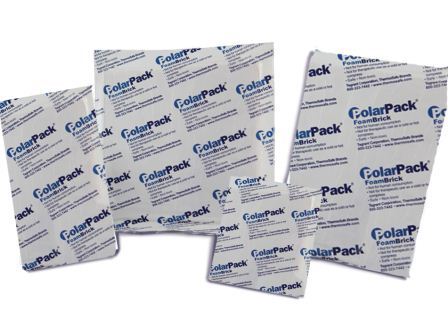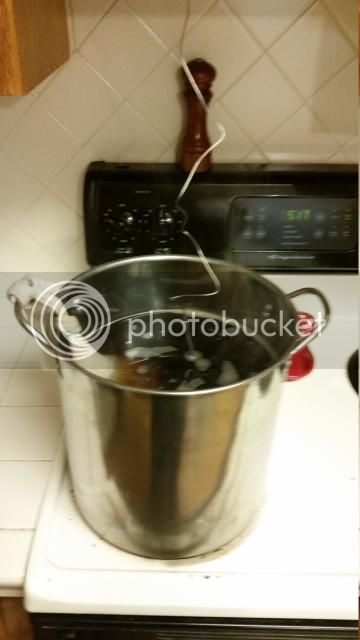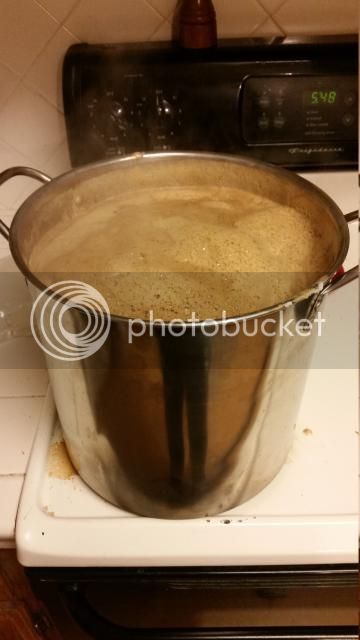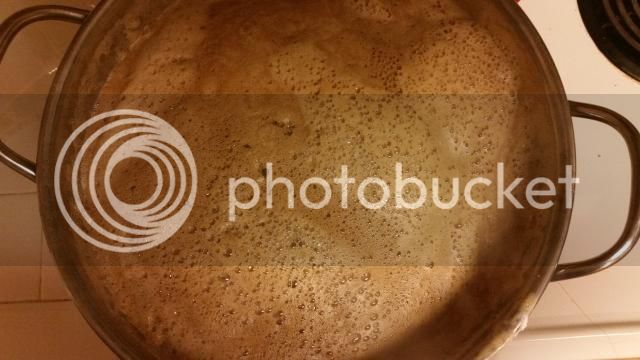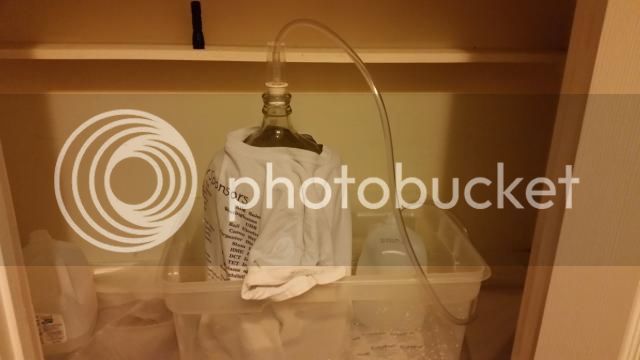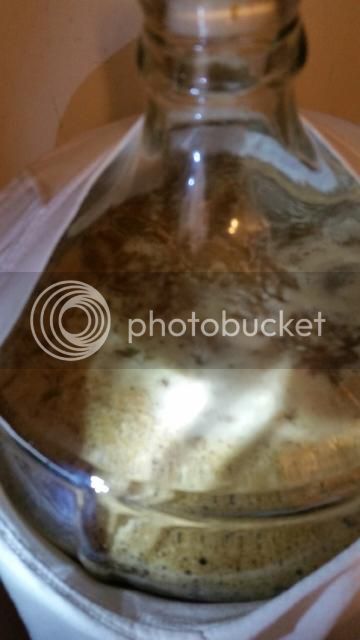Ok so after wanting to do this for years, I finally got my kit (Birthday gift from the wife!).
At the store I bought
http://bsghandcraft.com/index.php/e...kits-beer-and-wine/k7-beer-equipment-kit.html
http://www.brewersbestkits.com/pdf/1048 2013 Imperial Nut Brown Recipe.pdf
Also bought a spoon lol
Guy told me all I needed was some water and a pot. I already have a pot so, I thought I was good to go.
Did a little research though and decided to go ahead and order some Irish Moss as well as a rinse-less cleaner. The kit came with B-Brite which didnt seem to get great reviews.
I plan (hope!) to brew Wednesday. All of my supplies should be in by then. I'm also nursing a cold and being how high a priority cleanliness sis, I figure I probably should get started while I'm sneezing every 2 minutes.
Few questions:
Cooling.
I don't have a wort chiller. Is the best bet to just fill my sink with ice water? Can you add ice straight to the wort? Or at least really cold water? My recipe says to add water that is 64-72 degrees. My understanding is that the goal is to cool ASAP so why not use like 35 degree water or even ice?
Fermentation.
Recipe says 4-6 days or no bubbles for 48hr. Also has a secondary option to move it a secondary after 5-7 days for 2 weeks. Then to bottle for 2 weeks.
Is that good time frame? I would like some advise on this type beer and the best schedule for fermenting/conditioning.
My closet where I will store it seems to be about 72 right now but will probably drop a degree or two in the next few weeks.
Thanks for any help or tips!
At the store I bought
http://bsghandcraft.com/index.php/e...kits-beer-and-wine/k7-beer-equipment-kit.html
http://www.brewersbestkits.com/pdf/1048 2013 Imperial Nut Brown Recipe.pdf
Also bought a spoon lol
Guy told me all I needed was some water and a pot. I already have a pot so, I thought I was good to go.
Did a little research though and decided to go ahead and order some Irish Moss as well as a rinse-less cleaner. The kit came with B-Brite which didnt seem to get great reviews.
I plan (hope!) to brew Wednesday. All of my supplies should be in by then. I'm also nursing a cold and being how high a priority cleanliness sis, I figure I probably should get started while I'm sneezing every 2 minutes.
Few questions:
Cooling.
I don't have a wort chiller. Is the best bet to just fill my sink with ice water? Can you add ice straight to the wort? Or at least really cold water? My recipe says to add water that is 64-72 degrees. My understanding is that the goal is to cool ASAP so why not use like 35 degree water or even ice?
Fermentation.
Recipe says 4-6 days or no bubbles for 48hr. Also has a secondary option to move it a secondary after 5-7 days for 2 weeks. Then to bottle for 2 weeks.
Is that good time frame? I would like some advise on this type beer and the best schedule for fermenting/conditioning.
My closet where I will store it seems to be about 72 right now but will probably drop a degree or two in the next few weeks.
Thanks for any help or tips!



